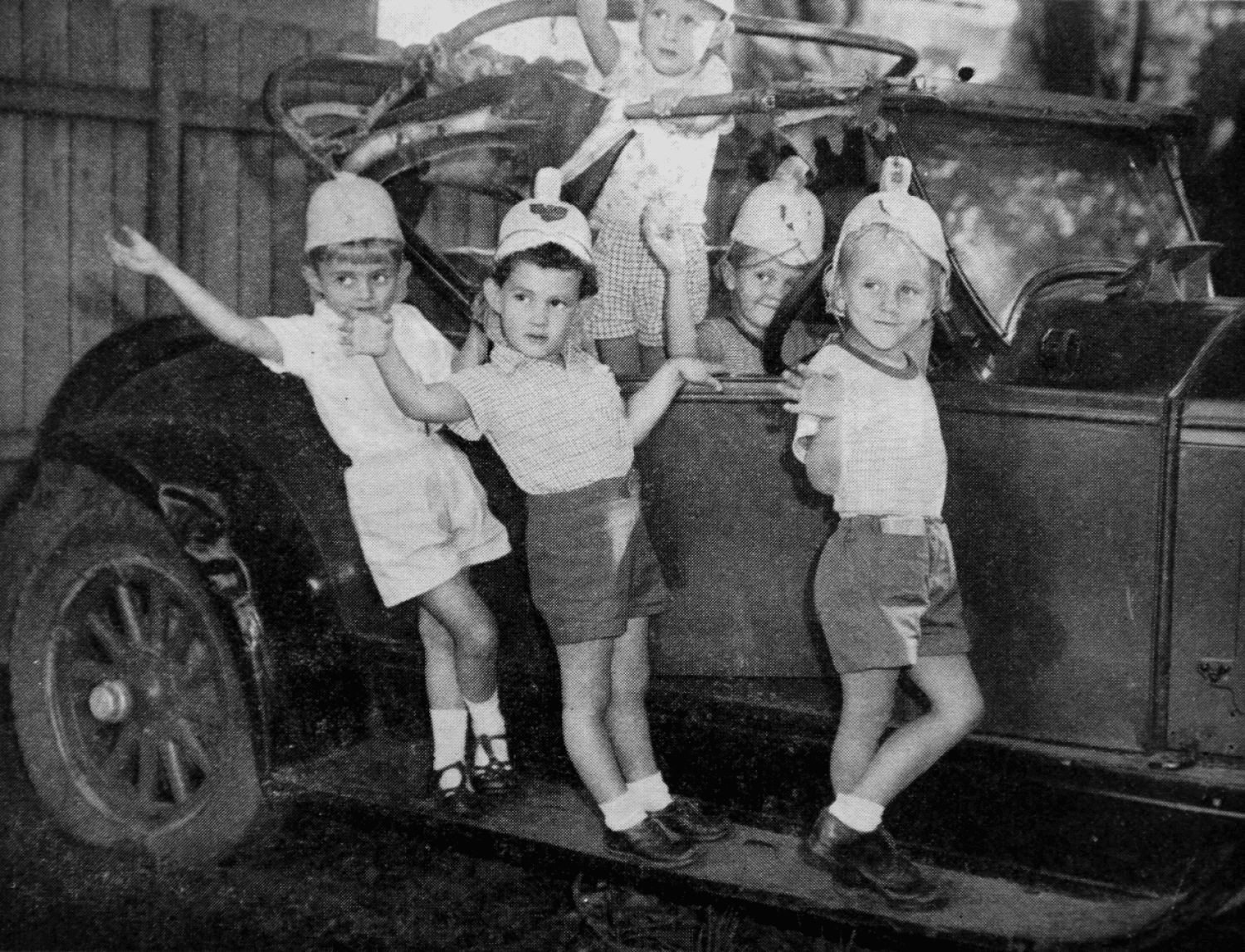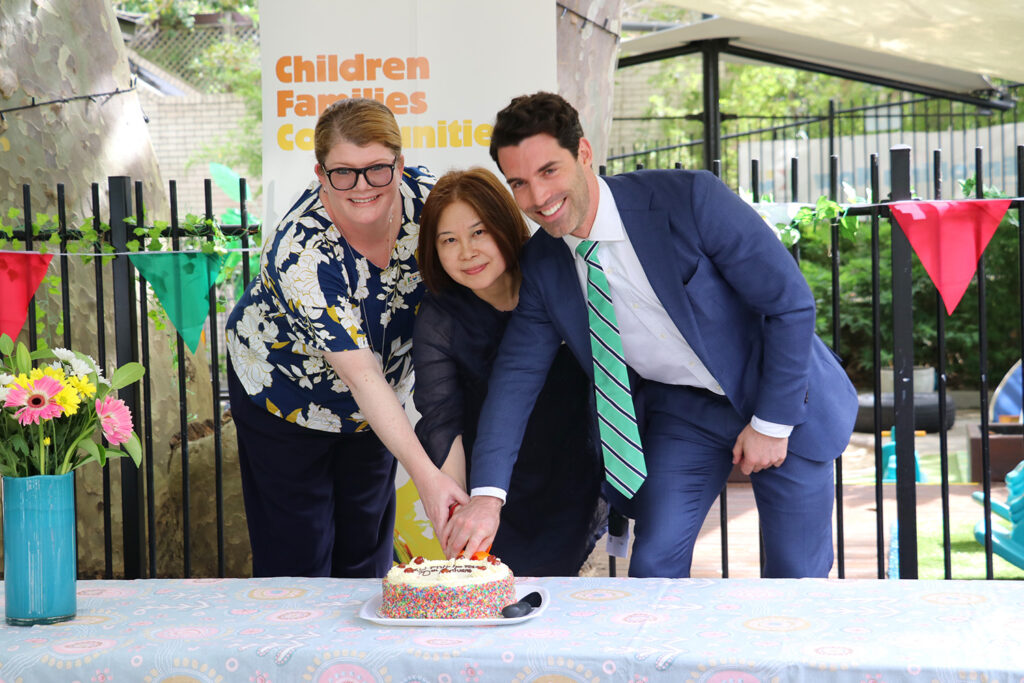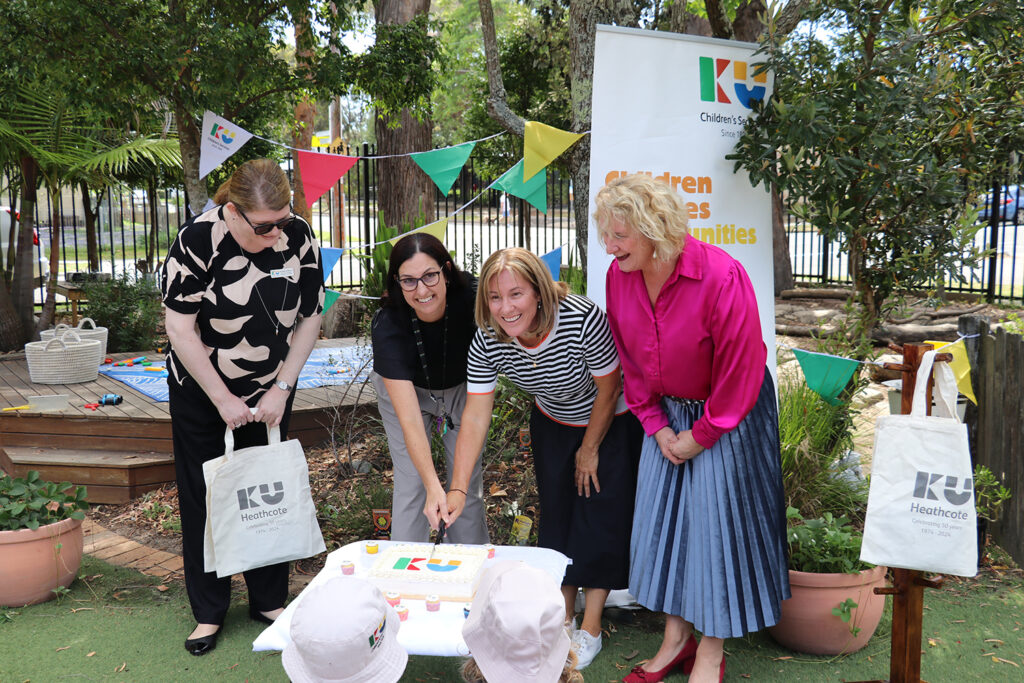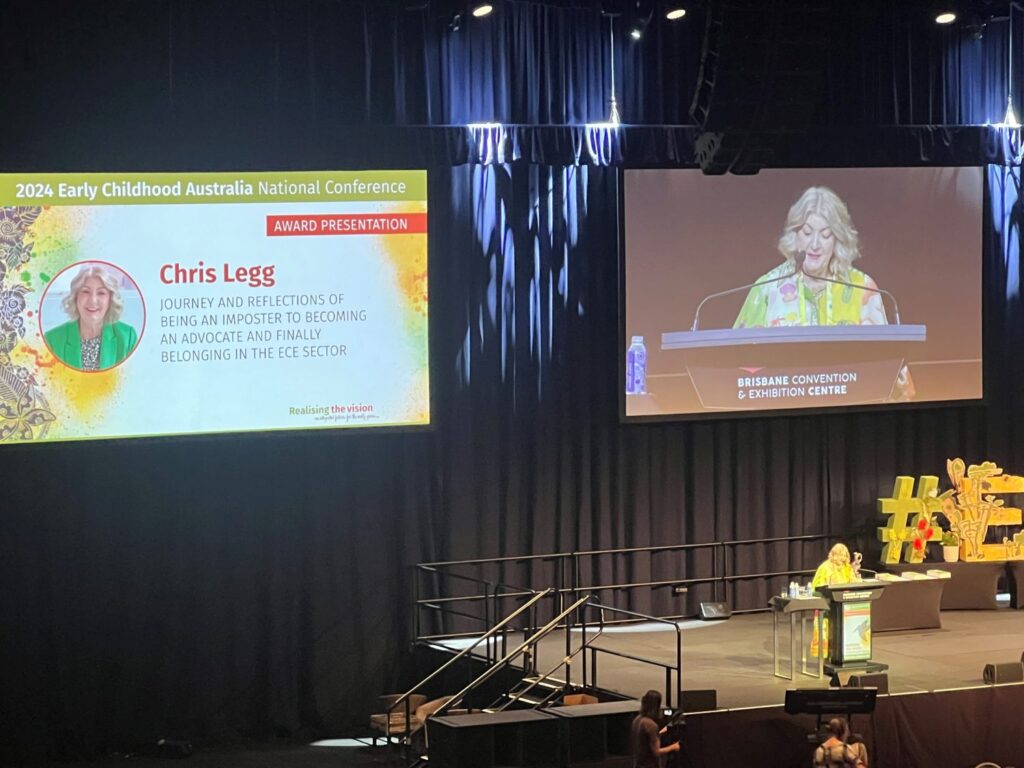Expansion in the Post War Era
In 1956, the objectives of the Kindergarten Union expand to include:
- To provide Kindergartens for children of three and four years of age.
- To understand and provide for the needs of young children.
- To foster happy families.
- To provide, through their Kindergartens, medical and dental services to ensure good health for school days. To train Kindergarten Teachers.
- To make Children’s Playgrounds places of health, occupation and interest for all children.
- To safeguard the interests of children everywhere.
The Kindergarten Union begins the 1950s still feeling some of the effects of war. Shortages of gas and power create difficulties, especially when it comes to the provision of hot meals: “In some cases meals have been cooked with the help of an open fire with delightful results”. According to the President’s Report of 1955, a focus on mental health is now the main issue within society, “When the Kindergarten Union was established, the dominating problem was poverty and ignorance. This problem is at present relegated to a minor position, and the focus is now on mental health and housing”. In keeping with this concern, Childhood and Mental Health is the focus of the 1955 Conference of the Australian Pre-School Association.
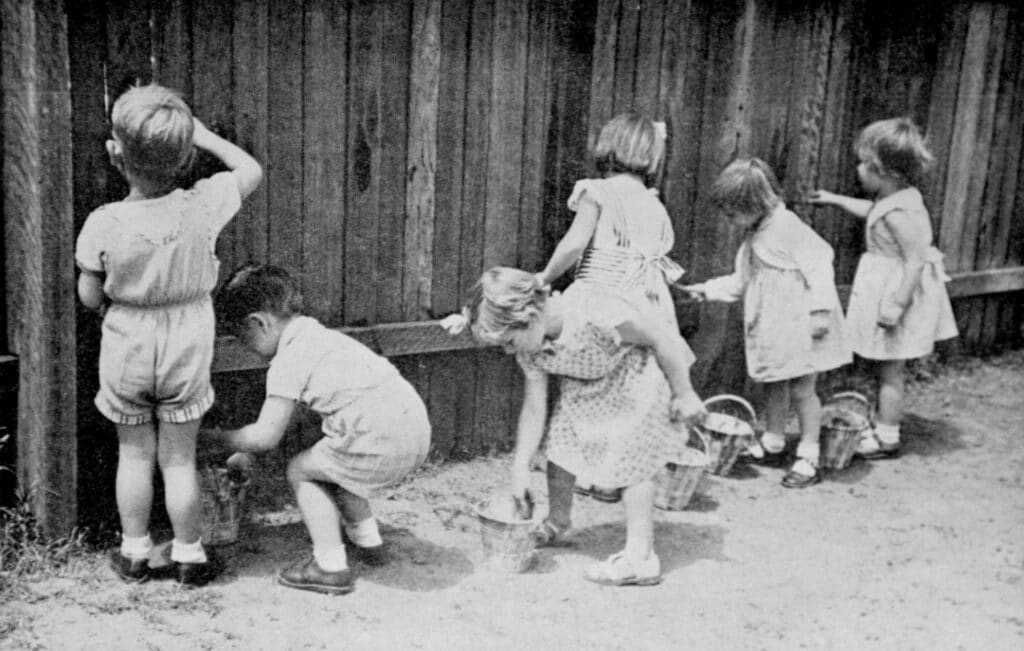
Expansion
The baby boom and post war European immigration boosts the Australian population. New suburbs spring up and the Kindergarten Union faces new challenges with:
“…a vast increase in the number of children under school age, but the increase is taking place in areas away from the areas in which the original kindergartens were constructed.”
In the 1950s, the Kindergarten Union responds to the changes in population by introducing more kindergartens in the Newcastle area, and purchasing the first mobile van to service the new suburbs of Concord, Yagoona, Chullora and Merrylands. Some kindergartens experience an influx of ‘New Australian’ families and the Union has to re-think its assumptions about how to best communicate with families. By 1960, there are 42 Kindergarten Union preschools including the mobile.
By 1966, the Union is encouraging preschools to move from extended day programs to half-day programs, to allow two groups of children to attend per day.
New demands and a new structure
A number of services led by active parent committees affiliate with the Kindergarten Union during this period, while other ‘managed’ services come under the Union’s umbrella as a new centralised management structure begins to emerge. This growing number of services places more demands upon the Kindergarten Union and the Union responds by creating the position of Kindergarten Supervisor in 1950. The Supervisor is responsible to the Executive Committee for the functioning of the kindergartens. By the mid 1950s, two Supervisors are employed and special supervisory visits are extended to groups establishing kindergartens that are not members of the Kindergarten Union.
In 1955/56, the Child Welfare Government Department begins to license centres. Kindergarten Union preschools undergo licensing and the Department calls on the Union to support other centres through the licensing process. In 1961, a third Supervisor is appointed and the annual Supervisors’ Report is supplemented by a Preschool Officer’s Report.
Finally, in the mid 1960s, after some years of lobbying, the NSW Government increases its subsidy to the Kindergarten Union. This supports the creation of a Regional Supervisor to better service country areas. In 1968, support extends to centres for Aboriginal children maintained by the Save the Children fund.

Staffing concerns
The Kindergarten Union executive struggles to retain and support staff in the face of limited funding and declines in real wages. In 1956, it introduces a superannuation fund for all permanent members of staff. While welcome, this doesn’t solve the problem of staff wages falling in real terms. In the early 1960s, several unsuccessful approaches are made to government to increase funding so that staff can be paid wages commensurate with other teachers.
Perhaps ironically, pressures on staffing appear exacerbated by “a growing appreciation of the value of qualified teachers” as “[I]ndependent kindergartens and private schools are competing for a limited number of staff available, and often are able to offer more favourable conditions.”
By the late 1960s, preschool staff become more militant. In 1968, the Federated Miscellaneous Workers’ Union applies to the Industrial Court for wage increases for untrained staff working in kindergartens. Also that year, the Preschool Teachers Association is formed. In 1969, Preschool Teachers apply to the NSW Industrial Commission for a wage increase, prompting the Kindergarten Union President to state:
“Such a development should have surprised nobody since Kindergarten Union teachers are qualified to teach in State schools where the salary scale in 1969 was almost twice that of the Kindergarten Union.”
Other events
During this period, a change in needs leads to the closure of the Samuel Cohen Kindergarten for the Deaf in 1958 along with the second oldest kindergarten at Woolloomooloo in 1968.
- 1966: The Peter Pan Committee lobbies Randwick Council for land at La Perouse to build a preschool for both Aboriginal and white children. The Aboriginal Women’s Association donates $2,000 to the Committee for the building.
- 1968: The reference to Playgrounds is dropped from the Kindergarten Union objectives.
At the end of the decade, the Kindergarten Union becomes involved in planning for a Child Care Centre at Sydney University for children aged from birth to 5 years. Catering to this age group marks a significant departure from the Union’s primary focus on the preschool child. The centre also initially houses the Shepherd Centre for deaf children.

